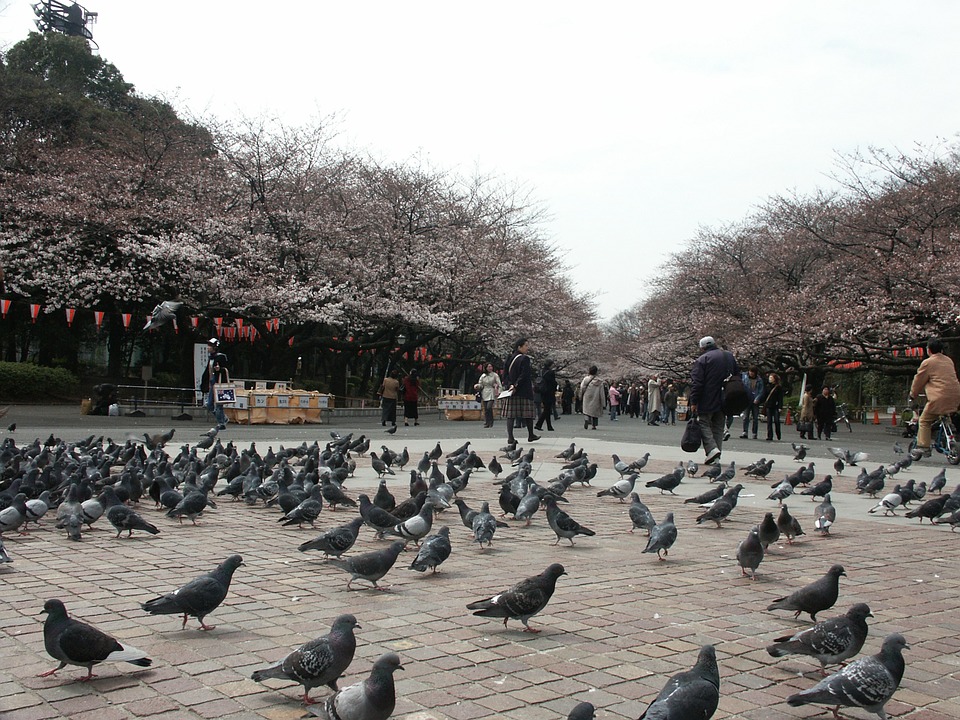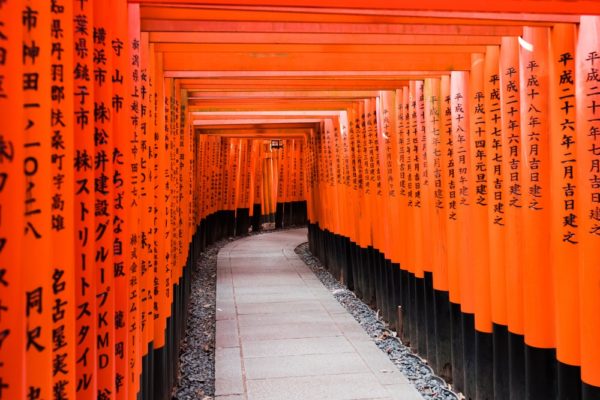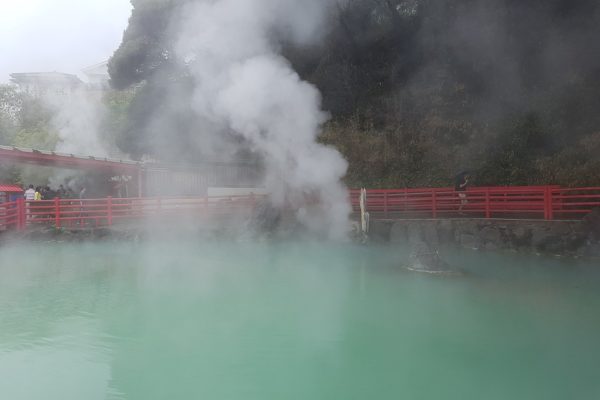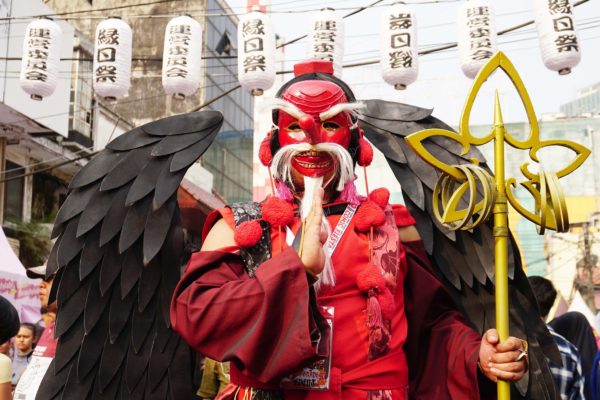Any time of the year, Japan has several events and activities to offer. In the month of March, various cherry blossom and plum blossom festivals are held in different towns and cities across the country, as it is at this point of spring season when cherry and plum trees in some areas start flowering and reach their peak blossoming stage. If visiting during this time of the year, make sure to check out one or more of the following March festivities to make your trip more fun and memorable:
Bunkyo Ume Matsuri – February 8th to March 8th
Observed since the Edo period, the Bunkyo Ume Matsuri is one of the most scenic festivals to enjoy in Japan in March. Held at the Yushima Tenmangu Shrine in Tokyo, it features about 300 plum trees and their beautiful white plum blossoms.
It typically lasts for a month, starting around mid-February and ending around mid-March. It is celebrated every year, and offers all sorts of lively activities and programs to visitors, such as taiko (traditional drum) performances, tea services and tea ceremonies, and flea markets that sell products made in Fukushima, Aomori, and other parts of Japan.
The Yushima Tenmangu Shrine is only two minutes away on foot from Yushima Station, five minutes from Ueno-hirokoji Station and Ueno-okachimachi Station, and eight minutes from Hongo-sanchome Station and Okachimachi Station. It is also a 15- to 20- minute pleasant stroll from Ueno Park.
Omizutori – March 1st to March 14th
A Japanese Buddhist festival held every year in the city of Nara in the Kansai region, Omizutori is a holy water-drawing celebration that is believed to cleanse humans of their sins. It is also an event that serves as a reminder that the spring season has begun.
Observed for two weeks at Todaiji Temple, it is made up of a series of rituals that have been done every year for the past 1,250 years.
Among its many events, Otaimatsu is the most popular. It is conducted every night at around 6:30 pm to 7:30 pm, and features gigantic torches that measure between six and eight metres, and have to be brought up the hill to the Nigatsudo Hall in the Todaiji Temple complex. Visitors can watch the spectacle from the square below the temple hall.
From Nara Station, the venue for Omizutori is about a ten-minute uphill walk from Todaiji Temple.
Hinamatsuri – March 3rd
Also known as Girls’ Day or Doll’s Day, Hinamatsuri is an annual Japanese festival that celebrates little girls and their good health and disposition in life.
During this time, Japanese families put on display different kinds of ornamental dolls in imperial court garb. These male and female dolls, usually handed down as family heirlooms, are dressed in colourful, lavish traditional clothing of the Emperor and Empress, ladies of the court, attendants, musicians, and other figures, and are arranged according to each family’s customs and rituals on a multi-tiered platform.
Hiwatari-sai – March 11th
Featuring monks walking on fire barefoot while reciting chants and prayers, Hiwatari-sai is a much-anticipated festival held at the foot of Mount Takao every March. Also called Fire Walking Festival, it is held at Yakuoin Temple, a Buddhist temple deemed as among the three most important Shingon sect temples in the country.
After the monks perform, the fires are put out, so that spectators can try and participate themselves and not end up hurting or burning their feet. People who wish for safety and good health of their families, careers, and others have to walk over the sacred smouldering coals barefoot for their prayers to come true.
Takaosan’s official page for the Yakuoin Temple provides more information on the festival.
March Grand Sumo Tournament – March 11th to March 25th
Every year, six sumo tournaments are held in different parts of Japan — in January, May, and September in Tokyo, in November in Fukuoka, in July in Nagoya, and in March in Osaka. During these times, several hundreds of the best and strongest sumo wrestlers from across the country battle it out in a ring with a diameter of 4.5-metres, using a variety of techniques and strategies to knock out or push the other one out of the designated fighting area.
The one held in March, called the March Grand Sumo Tournament in Osaka, is held across a period of 15 days, from March 11th to March 15th for 2018, at the EDION Arena Osaka (Osaka Prefectural Gymnasium).
For tickets and other information, visit the official website of the Grand Sumo Tournament.
White Day – March 14th
Observed one month after Valentine’s Day, White Day is an event in which the men gift the females chocolates, after receiving some “chocolates of love” or “courtesy chocolates” from them on Valentine’s Day.
Unlike in the West, Valentine’s Day in Japan is typically celebrated by women and girls gifting chocolates to men and boys that they admire, love, like, or respect. And, White Day serves as that day for men and boys to return the favour.
Some of the most common presents on White Day are white chocolates, jewellery, cookies, marshmallows, and lingerie. And, as an unwritten rule, these items should be at least twice the worth of the Valentine’s Day gifts received.
Ueno Sakura Matsuri – March 21st to April 8th
Ueno Park is considered as one of the best sakura viewing spots in Tokyo. Every year, from around late March to early April, it welcomes dense crowds of locals and tourists who want to enjoy the magnificent sight of pink sakura flowers in full bloom.

During the festival, the hundreds of sakura trees are illuminated by approximately one thousand lanterns starting at 5 pm up until 8 pm. People usually hold picnics or parties under the spectacular cherry blossom canopies.
Food stalls are also everywhere, particularly along the approach to Shinobazunoike Bentendo Temple and Ueno Toshogu Shrine.
Ueno Park is a stone’s throw away from Ueno Station.
Shizuoka Festival – March 30th to April 1st
A lavish three-day festival held in the city of Shizuoka, the Shizuoka Festival is a vibrant celebration highlighted by beautifully adorned giant floats, known as nebuta; several outdoor food stalls, called yatai mural; and various cosplay shows and traditional musical and dance performances.
During this time, sakura trees around the city are also usually in full bloom, so visitors can also enjoy taking in the sight of the lovely cherry blossoms.



